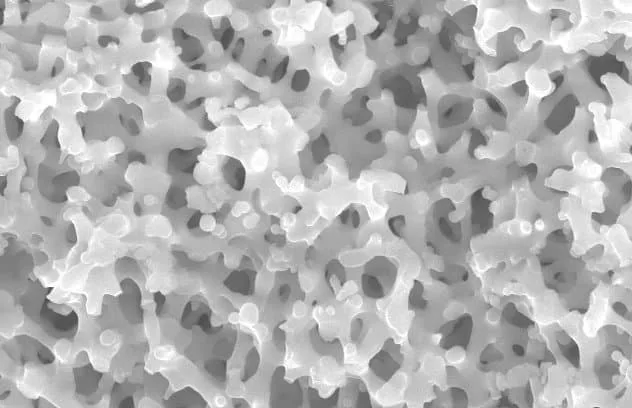Nanoboffins Punt Ultra-Thin Flak Jacket Plan
Astounding news from Australia today, as it appears that yet another unbelievable movie themed breakthrough has been made in gecko-related nanotech.
This time, the flick ligged by ink-thirsty boffins is Robocop, rather than Spiderman or The Incredibles. Sadly, we aren’t talking here about brains plucked from slain hero cops being implanted into invulnerable robot bodies packing pop-up automatic weapons.
“A flak jacket does not turn security guards, police officers and armed forces into Robocops,” says a release from the Institute of Physics (IOP), which is publishing the Oz research in question. No shit. But wait:
“New research in carbon nanotechnology however… can bounce bullets without a trace of damage… carbon nanotubes… not only stop bullets… but actually rebound their force… engineers in Sydney have undertaken experiments to find… the most effective flak jacket.”
Crikey.
How does the flak jacket work?
“Nanotubes bind together… because of the Van der Waals force… used… by geckoes when they stick to a ceiling.” OK, so there’s no actual robocop action going on here. But we might have some kind of amazing gecko-tech nanotube vest off which bullets will bounce harmlessly.
According to the IOP publicists, regular old crappy flak jackets made of “Kevlar, Twaron or Dyneema” are rubbish. “Targets can still be left suffering blunt force trauma – perhaps severe bruising or, worse, damage to critical organs,” they say. But bleeding-edge Antipodean research could change all that. “The dynamic properties of the materials we have found means that a bullet can be repelled with minimum or no damage to the wearer of a bullet proof vest,” according to Sydney-based engineering boffins Prof Liangchi Zhang and Dr Kausala Mylvaganam. Read full details here.
“The best material for a flak jacket should have a high level of elastic storage energy that will cause the bullet to bounce off,” say Zhang and Mylvaganam.
“This study estimates, though based on a very strong assumption, that body armour… could bounce off a bullet with a muzzle energy of 320 J.”
Actually that’s fairly poor. If you believe famous Russian gun nut Max Popenker’s stats the nanogecko vest won’t even stop ordinary 9mm and .45 pistol rounds. It certainly wouldn’t cope against anything saucy like .357 magnum, or God forbid the ridiculous .50 Desert Eagle hand-cannon ammo favoured by movie figures such as Bullet-tooth Tony (Snatch) and Agent Smith (Matrix trilogy). As for rifle bullets – not a chance.
The nanotube vest might do against pocket pistols – .22, .32, 9mm short – but nothing more. Assuming it needs to bounce the bullets to work, at least. On the other hand, Zhang and Mylvaganam reckon their 320-J-bouncer armour would be only a tad over half a millimetre thick. Presumably, heftier stuff would bounce pokier bullets. But the most troublesome part is the idea that bouncing a bullet is better than just stopping it. Conservation of momentum would seem to mean that bullets which bounce off at any speed would impart a larger impulse to the target than ones which simply stop. If the nanogecko flak jacket is a rigid plate which doesn’t deform on being hit, that might not be a problem; but the comparison with Kevlar suggests half-millimetre, fairly flexible fabric from which bullets will bounce.
The IOP says it is “devoted to increasing the understanding and application of physics.” It doesn’t seem to be doing a brilliant job in this instance.









